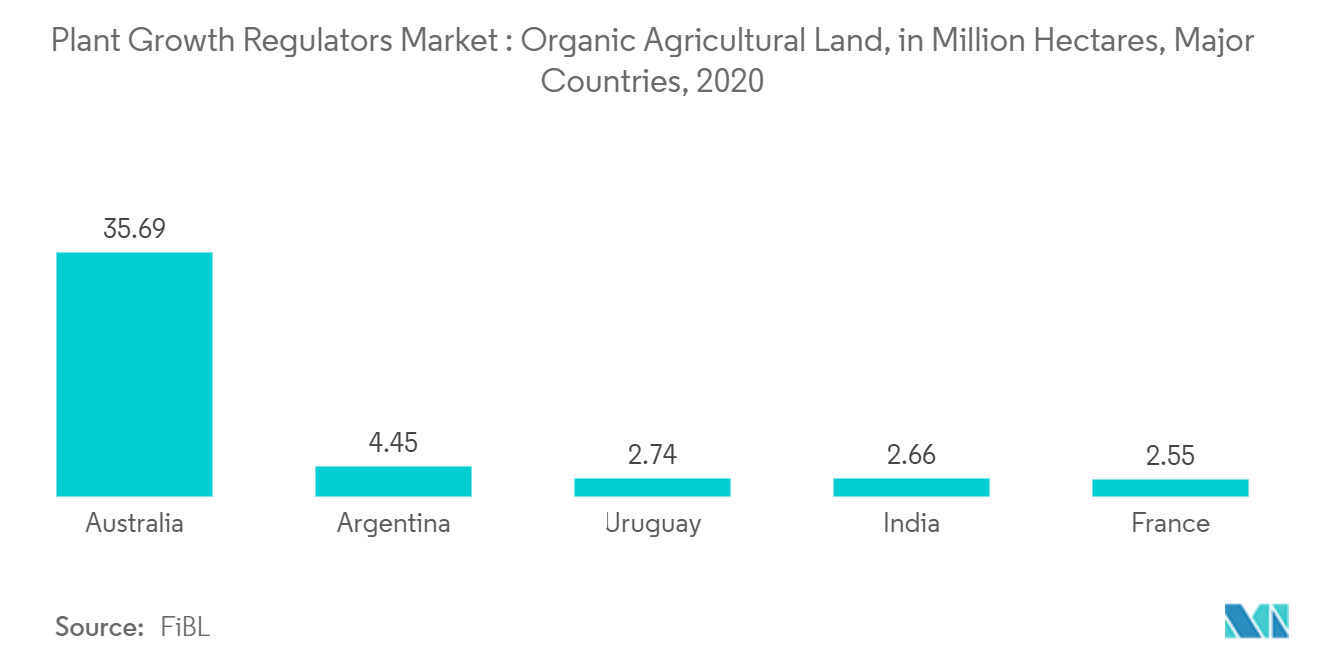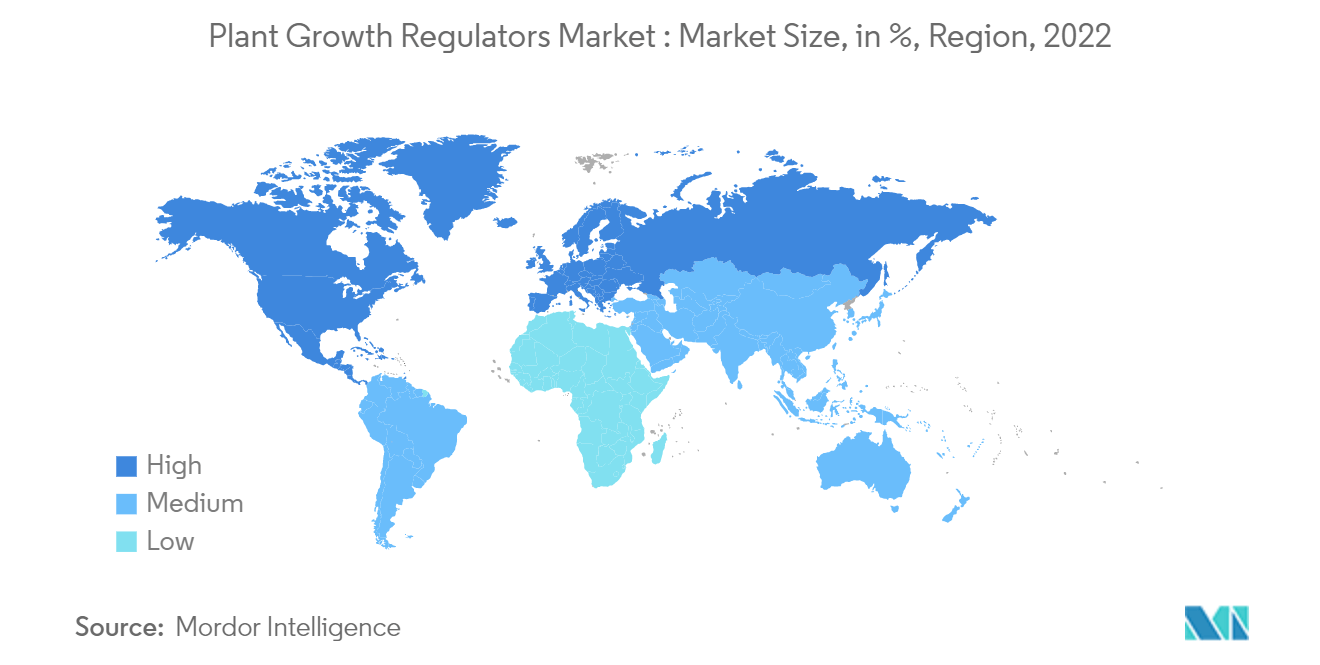Market Trends of Plant Growth Regulators Industry
Increasing Demand for Sustainable Agricultural Practices
The application of plant growth regulators may help increase the blossom rate, stimulate plant growth, and delay the onset of sprouting of root crops. Such positive results alter the plant nutrition and aid the commercial agribusinesses in increasing the quality and quantity of the crop yield.
Plant growth regulators (PGR) are recognized for promoting growth and development under optimal and stress conditions. Reducing the crop loss under the impact of these climatic variations is a great challenge and requires substantial reforming of crop improvement programs and agronomical practices. In such conditions, plant growth regulators (PGRs) are useful tools to combat these stresses and climate variation for sustainable crop production.
Among all the growth regulators, cytokinins are widely consumed and account for around 35% of the market share. Cytokinins are expected to continue as the fastest-growing segment as they enhance stress tolerance and stimulate protein synthesis. Auxin is the second-largest segment, and it is expected to grow due to the increasing demand for medicinal plants and growth in turf and landscaping. Cereals and oilseeds are the major consumers of plant growth regulators, followed by fruits and vegetables, accounting for around 75% of the market share.
According to the World of Organic Agriculture (FiBL) 2022 report stated that the share of the world's agricultural land that is organic was 1.6 percent in 2020. The highest organic share of total agricultural land, by region, was in Oceania with 9.7 percent, followed by Europe with 3.4 percent and Latin America with 1.4 percent. In the European Union, the organic share of the total agricultural land was 9.2 percent, and the other regions, the share is less than one percent. In 2020, the organic agricultural land increased in all continents. The highest absolute growth was in Latin America (19.9 percent), followed by Europe (3.7 percent) and Asia (7.6 percent), which will escalate to propel the growth of the sustainable agricultural pratices in the market.

Europe Dominates the Market
European countries promote sustainable agriculture, food security, and rural development. In the European Union, the European Commission has pledged itself to the Form to Fork Strategy, which is centered on organic farming. In this approach, 25% of the EU's agricultural land will be used for organic farming by 2030. Therefore, enhancing crop yield while achieving sustainability has become more crucial. Hence, the demand for plant growth regulators in Europe is considerably high due to the large-scale organic farming industry, where specific plant hormones such as cytokinin, auxins, and gibberellins are utilized in several farming methods.
National governments are expected to invest more in organic farming to make their food industries more resilient. Organic farming will also be encouraged as countries look to reduce pesticide usage and improve soil fertility. In May 2020, as part of the European Green Deal, the EU announced the target of reaching 25 percent of farmland organic by 2030. The EU's farm-to-fork strategy aims to improve food security in Europe. The strategy plans to reduce the environmental impact of the European food system by reducing chemical pesticide use by 50 percent, hazardous pesticide use by 50 percent, fertilizer use by 20 percent, and nutrient losses by 50 percent by 2030.
The huge demand is due to the increasing growth of organic farming and increasing indoor farming units like greenhouses and glasshouses. Vegetables and fruits are increasingly becoming the main users of plant growth regulators, thus driving the market. To cater to this growing demand, companies are introducing new products into the market. For instance, in 2020, BASF launched Attraxor in the United Kingdom. Attraxor is a new plant growth regulator (PGR) that features the powerful active prohexadione-calcium.

